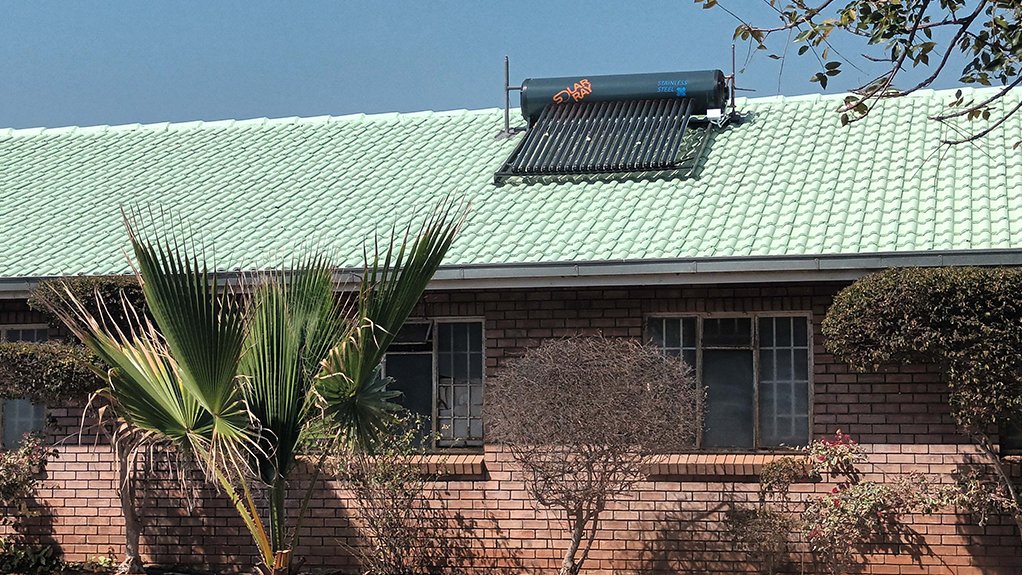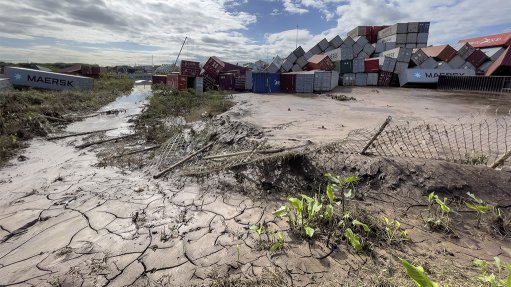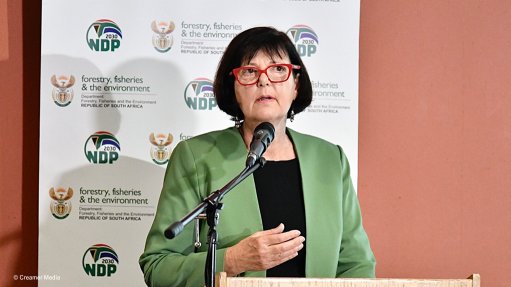Solar geysers mitigating limescale impacts in Limpopo
Airforce Base Makhado, in Limpopo, now has solar geysers designed to reduce the damage of limescale build-up and the amount of electricity used to heat water in domestic housing.
Piloted as one of the projects implemented through a five-year partnership between the South African National Energy Development Institute (SANEDI) and the military, this installation is part of ongoing research to ensure sustainable energy, as well as quantify energy, cost and emissions savings through energy efficient and renewable energy interventions.
Certain parts of South Africa are more prone than others to severe limescale build-up on water heating systems and many consumers are unaware that this raises the costs of heating (electricity) and significantly reduces energy efficiency, as well as the lifetime of the hardware, SANEDI explains.
Parts of Limpopo’s natural environment contribute to this issue where “hard water”, containing high mineral content, builds up in geyser and piping hardware that then requires more electricity to heat the water. In addition to affecting a geyser’s efficiency, for example, the build-up eventually damages the geyser and heating element and thus reduces their lifespan, the organisation outlines.
“What you find is that a geyser that should last for five years, is now only lasting eighteen months or less. The South African National Defence Force are helping us build a business case for this technology in high limescale water areas,” says SANEDI energy efficiency acting GM Dr Karen Surridge.
The project has kicked off with the installation of 50 indirect high-pressure solar water heating systems and seven artisan soldiers were trained to install and maintain these systems.
Surridge says the high-pressure indirect system specifically deals with limescale risks to household water heating systems. These indirect high pressure solar heating systems will be compared to other heating technologies.
“If you put in a ‘normal’ direct solar water heating system, it will simply calcify with limescale just like the electrical heating. Indirect systems work by heating a water-glycol mix (similar to anti-freeze in your car) which runs alongside the normal water and heats it for use.
“In hot climates like Limpopo, solar water heaters can reach much higher temperatures than what the thermostat of a conventional geyser will allow, meaning that less hot water is needed for use,” explains Surridge.
SANEDI has previously quantified the energy cost savings from a similar project at a different military base in Limpopo, albeit at a larger scale, and says the “real-life” data indicated a return on investment in under three years accompanied by significant cost, electricity and emissions savings.
“It is the first time the technology is being tested, at a domestic scale, in the area of Limpopo where hard water is so severe. We are looking forward to seeing the results. Proving sustainable and efficient energy technologies fit for purpose is vital in the energy constrained environment in which South Africa finds itself at present.
“Solar water heating will contribute positively towards reducing electricity demand on the grid, electricity costs to the consumer and emissions acting on climate change,” Surridge notes.
A maintenance and operations plan aims to ensure that the system keeps running smoothly over the next five years.
Comments
Press Office
Announcements
What's On
Subscribe to improve your user experience...
Option 1 (equivalent of R125 a month):
Receive a weekly copy of Creamer Media's Engineering News & Mining Weekly magazine
(print copy for those in South Africa and e-magazine for those outside of South Africa)
Receive daily email newsletters
Access to full search results
Access archive of magazine back copies
Access to Projects in Progress
Access to ONE Research Report of your choice in PDF format
Option 2 (equivalent of R375 a month):
All benefits from Option 1
PLUS
Access to Creamer Media's Research Channel Africa for ALL Research Reports, in PDF format, on various industrial and mining sectors
including Electricity; Water; Energy Transition; Hydrogen; Roads, Rail and Ports; Coal; Gold; Platinum; Battery Metals; etc.
Already a subscriber?
Forgotten your password?
Receive weekly copy of Creamer Media's Engineering News & Mining Weekly magazine (print copy for those in South Africa and e-magazine for those outside of South Africa)
➕
Recieve daily email newsletters
➕
Access to full search results
➕
Access archive of magazine back copies
➕
Access to Projects in Progress
➕
Access to ONE Research Report of your choice in PDF format
RESEARCH CHANNEL AFRICA
R4500 (equivalent of R375 a month)
SUBSCRIBEAll benefits from Option 1
➕
Access to Creamer Media's Research Channel Africa for ALL Research Reports on various industrial and mining sectors, in PDF format, including on:
Electricity
➕
Water
➕
Energy Transition
➕
Hydrogen
➕
Roads, Rail and Ports
➕
Coal
➕
Gold
➕
Platinum
➕
Battery Metals
➕
etc.
Receive all benefits from Option 1 or Option 2 delivered to numerous people at your company
➕
Multiple User names and Passwords for simultaneous log-ins
➕
Intranet integration access to all in your organisation





















